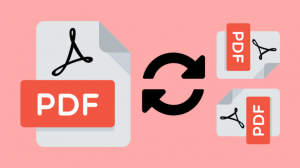The administration of Big Data has become a difficulty for many enterprises throughout the world. Dealing with Big Data is difficult due to the enormous amount of data and the high frequency with which it is generated. Java, Python, R, and Scala are among the major computer languages used by the Spark Data Science tool. It offers libraries for a wide range of tasks, from SQL to Streaming and AI, and it can run on a single computer to thousands of servers. These characteristics make it a simple platform to start with and scale up to Big Data processing on an unimaginably large scale.
This article will give you an overview of the Spark Data Science tool, including its important features as well as the processes for installing it.
Spark Data Science Tool
Apache Spark is an analytical tool that is a collection of Big Data processing libraries, Structured Query Language with Streaming Modules, Graph Handling, and Machine Learning. Simple APIs can be used to process a large amount of data in the Spark Data Science tool. The End-users don’t have to worry about task and resource management on computers because the Spark Data Science tools engine does it for them.
The Spark Data Science tool is designed to work with large amounts of data and execute a range of tasks quickly. The speed of processing is quicker than the well-known Big Data MapReduce approach, allowing for more interactive queries, calculations, and stream processing. The Spark Data Science tool makes it simple and cost-effective to condense a lot of processing kinds by combining them into a single-engine, which is critical for creating Data Analysis Pipelines.
Features of the Spark Data Science Tool
- A unified system: The Spark Data Science tool can be used for a variety of data analytic activities. The same APIs and processing engine are used for anything like simple data stacking, SQL queries, Machine Learning and Streaming Computations. These jobs are easier to construct and more efficient because of the Spark Data Science tool’s unified design.
- A System Optimized by its Core Engine: The optimization of Spark Data Science’s core engine is required to carry out computations efficiently. It does it by stacking data from storage systems and executing analytics on it rather than storing it permanently.
- An Advanced Set of Libraries with Functionalities: The Spark Data Science tool includes standard libraries that are used by the great majority of open-source projects. The libraries have evolved to include ever-increasing sorts of functionality, transforming them into multipurpose Data Analytics tools.
Steps to Install the Spark Data Science Tool
To install the Spark Data Science tool a Java Development Kit (JDK) must be installed on your computer because it contains all of the necessary tools, and a Java Virtual Machine (JVM) environment, which is necessary to operate the Spark Data Science application.
To begin working with the Spark Data Science tool, you must first complete the following three steps:
Step 1: Install the Spark Software
To install PySpark, use the pip command:
$ pip install pyspark
Alternatively, you can go to the Apache Spark download page and get it there as seen in the image below.
After that, make sure you untar the directory in your downloads folder. You can do this by double-clicking the spark-2.2.0-bin-hadoop2.7.tgz archive or by opening your Terminal and typing the following command:
$ tar xvf spark-2.2.0-bin-hadoop2.7.tgz
Run the following line to relocate the untarred folder to /usr/local/spark:
$ mv spark-2.1.0-bin-hadoop2.7 /usr/local/spark
If you receive an error message stating that you do not have authority to move this folder to a new location, you should add sudo before this command. $ sudo mv spark-2.1.0-bin-hadoop2.7 /usr/local/spark $ sudo mv spark-2.1.0-bin-hadoop2.7 /usr/local/spark You’ll be asked for your password, which is normally the same one you use to unlock your computer when you first turn it on.
Now that you’re ready to get started, go to the /usr/local/spark folder and open the README file. This command can be used to accomplish this:
$ cd /usr/local/spark.
This will lead you to the required folder. Then you can start looking through the folder and reading the README file within.
Run $ ls to get a list of the files and folders in this spark folder. A README.md file is included with the package. There’s a README.md file in there. You can use one of the following commands to open it:
# Open and edit the file
$ nano README.md
# Just read the file
$ cat README.md
Step 2: Load and Explore Your Data
Even though you have a better understanding of your data, you must devote more time to it. However, you must first set up your Jupyter Notebook using the Spark Data Science tool, as well as do some preliminary steps to define SparkContext.
By typing $ jupyter notebook into your terminal, you can launch the notebook program. Then you create a new notebook and import the findspark library with the init() function. In this situation, you’ll pass the path /usr/local/spark to init() because you’re confident that this is the location where Spark was installed. This is depicted in the graphic below.
Step 3: Create Your First Spark Program
To get started, import and initialize the SparkContext from the pyspark package. Remember that you didn’t have to do this before because the interactive Spark shell created and initialized it automatically for you!
After that, import the SparkSession module from pyspark.sql to use the inbuilt builder() method to create a SparkSession.Connect the master URL to the application name, add some further information, such as the executor memory, and then use getOrCreate() to get the current Spark session or create one if none exists.
The textFile() method will then be used to read the data from the folder you downloaded to RDDs. This method accepts a file’s URL, which in this case is the machine’s local path, and reads it as a collection of lines. For your convenience, you’ll read in not only the .data file but also the .domain file, which contains the header. You’ll be able to double-check the order of your variables this way.\
Conclusion
The purpose of this essay was to give you an overview of the Spark Data Science tool. It went through the features of the tool as well as how to use it.
Data science nowadays requires a great deal of data collecting and data transmission effort, which can be time-consuming and error-prone. Hevo Data, a No-code Data Pipeline, could make your life easier by allowing you to send data from Without having to create code over and over, any source may be routed to any destination in an automated and safe manner. With Hevo Data’s strong connection with 100+ sources and BI tools, you can quickly export, load, convert, and enrich your data and make it analysis-ready.




